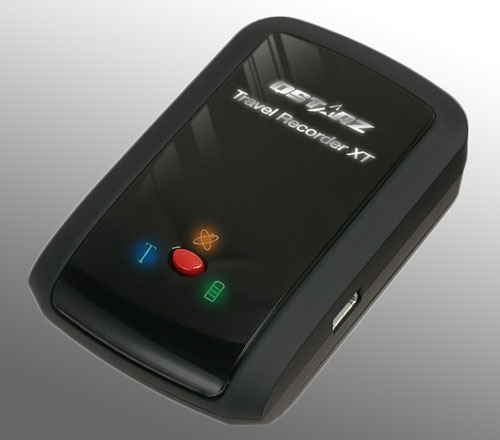
New high end point & shoots and almost all smartphones have Global Positioning System (GPS) built into them. They allow you to incorporate latitude & longitude of the location where the photo taken into the Exchangeable image file format (Exif) header of the photo. But more costly and sophisticated Digital SLR’s lack this simple tool. How will you incorporate this information is subject of my short tutorial. I will make it as simple as possible with bare minimal tools which I have incorporated in my workflow. I hope this information will be useful for all who want to include GPS info into their photos.
I make it a point to display Exchangeable image file format (Exif) on all my photos. I consider it a duty of a every responsible photographer to inform his viewer what parameters he has used while taking the particular photograph. I have seen many discussions on the secrecy of techniques which are not supposed to revealed to anybody.
I come from a Medical profession which also was filled with secrecy. Latin & Greek words doctors were used is mainly to either to confuse or hide facts from the common man ;). Prescriptions were totally unreadable except to the chemist and the doctor himself. All this has changed now. Internet and information revolution has given most of this hidden information to common man. This has been boon as well as bane to common man. On one hand he is bombarded with good information which is equally mixed with quackery as well marketing. He will be in a dilemma how to differentiate one another. Let us leave medical profession to guide a path through this mess.
Photography also suffered from the same irony, with digital camera everybody has become photographer. The basic knowledge as well as foundation of photography is lacking. I feel openness is the way forward in spreading awareness about photography. When I started this blog I had lot of trouble trying to display EXIF info as well getting that info into the photograph. WordPress engine I am using was not really had any effective tools which could read and display EXIF information in the way I wanted. I had to hack with several plugins to produce satisfactory result. GPS is one tool I relied upon to add location information into the image. Canon as opposed to Nikon has been neglecting the need for a GPS with DSLR’s.

First you need to get a GPS tool. There are some dedicated GPS taggers which sit on the hot shoe of the camera and add the location information directly onto the photo. Nikon camera has quite a few solution. But since they tie you up with a particular software and hardware combination, I don’t recommend it. Get general GPS logger which log at regular interval GPS info onto a log file. After searching many alternatives I chose Qstarz BT-Q1000XT. It is a GPS Travel Recorder also known as a data logger (or track logger). Q1000XT is capable of recording up to 40 days, which is very reliable and powerful for long trip arrangement. You can log up to 400,000 waypoints as you like. I ordered it from a GPS shop in Delhi called Groovy GPS Store who specialize in selling GPS. On their website only older model (Qstarz BT-Q1000X) is listed. But the Newer model (Qstarz BT-Q1000XT) is what I got from them.
Your GPS position at each point in time (intervals vary e.g. every 5 second or so, as set by the device) is recorded as a track point. Digital cameras also time-stamp your images, so the two time stamps can be compared. Wherever the time stamps match (the clocks in both devices should be synchronized), the associated GPS coordinates can be linked to a particular photo. You can use any GPS logger, even your smartphone, so far as they have logging function and can produce a log in a format called GPX. GPX (the GPS Exchange Format) is a light-weight XML data format for the interchange of GPS data (waypoints, routes, and tracks) between applications and Web services on the Internet.
Here is an example track log of my Pelagic Bird watching Trip in GPX format (opens in a text editor). You can also check the map it renders on Google map below.
The actual “matching” of track point to photo is done by the software. Before we look at accessing the logs and photo-matching, let’s take a quick look at the alternative, manual method of geo-location. You don’t need to buy a dedicated photo tracker to use the automatic method; you in-car navigation GPS device may suffice (with appropriate software), as could a GPS trekking product. What matters is the ability to record track logs.
Before getting this data logger I was using manual method of adding GPS coordinates. I used to locate my location manually on Google earth using my memory of the area where and when I took photo, and incorporating that into the photograph. It was not very accurate but an approximate way of GPS tagging your photo.
There are plenty of software, some come with the GPS device and few 3rd party GPS tools. I will not go through all of them as I have little experience using them except during early days of evaluating which was good for my purpose. Many of them failed to add GPS info into the Raw files I shoot (not directly into Raw file but xmp side car file). My workflow revolved around Adobe Light room & Photoshop. So I wanted to use a plugin to Adobe Light room which I can use easily on number of photos.
Because the Adobe Lightroom 3 doesn’t support geoencoding natively, you need to use a plugin, Jeffrey’s “GPS-Support” Geoencoding Plugin for Lightroom. It is released as donatioware. using this plugin you can geoencode your photos either using GPX log file from your GPS Logger, or by pinpointing your location on the Google Earth manually. You can also manually enter latitude & Longitude. It can batch process huge number of photos without a sweat.
This has been my workflow incorporating Geoencdng photos. So all you need is this plugin, GPS logger and Adobe Lightroom. When we export photos out of Adobe Lightroom they will be tagged with the GPS info. So next time you want to know location of any of my photo just expand it to the large size and have a look at the Exif info along with location on Google map.
If you want to learn further on geoencoding, check the following links.


Thank you DR. for your Information. and Tool
Thank you Jinesh Prasad
Thank you for very useful article. Nikon has a slot for GPS in its mid range and high end DSLR. Is there any cable which can connect third party logger like qwartz to Nikon .Their GPS device costs around 15k but these are costing around 7.5-8k .Can we connect with a micro USB connector ?
Dear Srikanth,
Thanks. As I mentioned in my article Nikon has much better GPS support. The following Nikon camera support GPS input directly. You can check 3rd party solution to connect to Nikon camera directly at this great comparison of direct record GPS solutions for Nikon article on Flickr. My preference is still Data logger which is not connected to camera.
Thank again for an enlightening article. I was always wondering geotagging photos and used to do so using google maps and memorising approx. location ( which is very gross approximate and inaccurate. I searched for nikon GPS soln and hardware was around 15k. After your article made a search for mobile application and got a very useful geotagging application for iphone .Its available as free and Pro version ( 4USD) but it serves the purpose of geotagging and tracking a trip. Only flip side is it drains battery fast. I am thinking of buying a data logger like the one mentioned in your article may be after sometime. Thanks